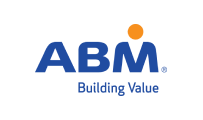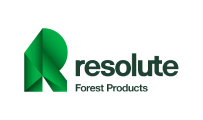In February 2025, the European Commission introduced the Omnibus I package, a pivotal regulatory reform aimed at streamlining the Corporate Sustainability Reporting Directive (CSRD) and related frameworks. Designed to balance reporting burdens with transparency, the Omnibus I signals a shift, not just in regulation, but in the strategic role ESG professionals must now play.
With deadlines extended to 2027 and a significant reduction in mandatory data points, the message is clear: compliance is evolving into competitive advantage. For sustainability professionals, finance teams, and compliance leaders, this isn’t just a regulatory update, it’s a career-defining opportunity.
Why Understanding the Omnibus I Reforms Matters
The Omnibus I package is more than a bureaucratic tweak, it redefines the ESG landscape for European and global companies. ESG professionals who understand and anticipate its implications can transform regulatory complexity into strategic value.
Key Impacts of the Omnibus:
- Reduced reporting burden: The required ESRS (European Sustainability Reporting Standards) data points are being trimmed by approximately two-thirds.
- Timeline extension: The CSRD deadlines for non-listed and non-EU companies have been postponed to 2027, allowing more time for internal preparation.
- Refocus on materiality: A sharper emphasis on double materiality and value chain transparency remains core, even as simplification occurs.
- Shift in assurance landscape: Less than 25% of EU member states currently authorize Independent Assurance Service Providers (IASPs), opening a competitive field for trained professionals.
According to ECB President Christine Lagarde, reducing reporting requirements too drastically could undermine financial stability by weakening climate risk analysis, a reminder of the stakes involved.
From Compliance to Strategy: Turning Change Into Opportunity
Mastering the Omnibus reforms offers a strategic edge in today’s sustainability profession. Here’s how ESG professionals can lead, not lag:
- Understand the CSRD and ESRS 2.0
The revised ESRS framework aims to simplify without sacrificing relevance. Professionals must learn how to:
- Prioritize material disclosures
- Align metrics with investor expectations
- Support internal teams with clarity on revised standards
- Get Ahead on Assurance
With third-party verification becoming the norm, understanding limited vs. reasonable assurance requirements can set professionals apart. Staying ahead of national IASP authorizations is key.
- Double Down on Double Materiality
Simplification does not mean reduction in responsibility. Double materiality, a cornerstone of EU ESG policy, remains a mandatory lens for risk, opportunity, and impact analysis.
- Invest in Certified Training
To truly lead, professionals need updated tools. Programs like the Certified Sustainability (ESG) Practitioner – Advanced Edition by CSE are structured to:
- Cover CSRD and EU Taxonomy
- Teach materiality assessment techniques
- Enable stakeholder mapping and engagement
- Prepare participants for assurance and audit-readiness
Common Pitfalls to Avoid
Even as the rules shift, the stakes remain high. Avoid these frequent mistakes:
- Waiting for perfect clarity: Delaying action means missing the window for early advantage.
- Focusing only on compliance: ESG today is about value creation, not just regulatory checklists.
- Neglecting assurance preparation: Without credible verification, disclosures risk being dismissed by investors and regulators.
What Experts and Institutions Are Saying
“Too much simplification could jeopardize climate risk analysis and financial system resilience.”, Christine Lagarde, European Central Bank
“Reducing ESRS requirements risks weakening environmental accountability.”, WWF EU Policy Office
Despite concerns, the evolving framework presents a rare window for professionals to influence ESG standards—not just react to them.
FAQs
What is the EU Sustainability Reporting Omnibus?
A 2025 reform initiative aimed at simplifying and delaying certain aspects of the CSRD while maintaining core sustainability principles.
How does this affect my ESG reporting strategy?
It gives you more time to prepare—but demands a sharper focus on materiality, assurance, and stakeholder expectations.
Is ESG certification worth it for my career?
Yes. The demand for certified professionals is rising across finance, energy, manufacturing, and consulting. ESG expertise is a top skillset for roles like Sustainability Manager, ESG Analyst, or Chief Sustainability Officer.
Next Steps: Become a Leader in ESG Reporting
The Certified Sustainability (ESG) Practitioner Program – Advanced Edition (Europe) by the Centre for Sustainability and Excellence (CSE) is specifically designed for this transition period.
Program Highlights:
- Expert-led sessions aligned with CSRD, EU Taxonomy, and ESRS
- Hands-on tools for materiality, stakeholder mapping, and reporting
- Internationally recognized certification, accredited by CSE, CMI, CPD
Cohort Start: 2025 (Live Online Format)
Ideal for: ESG, sustainability, finance, legal, and compliance professionals
Seats are limited: register now to take the lead in Europe’s sustainability evolution.
In a world of shifting ESG rules, the winners will be those who understand the direction, not just the details. The Omnibus I package is a signal that the ESG space is maturing and professionals must evolve with it.
Now is the time to prepare, position, and lead.







